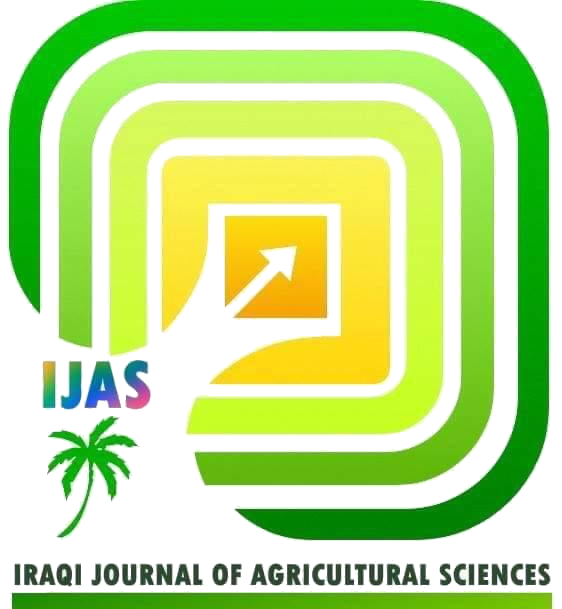REMOVAL OF AMOXICILLIN FROM AQUEOUS SOLUTIONS USING MODIFIED BENTONITE
DOI:
https://doi.org/10.36103/90gdvn38Keywords:
amoxicillin; modified bentonite; sorption; isotherm; kineticAbstract
The objective of this study is to modify Iraqi natural bentonite (NB), a readily accessible and low-cost raw material, using various techniques and to explore the possible use of it as an adsorbent for the elimination of amoxicillin (AMX) from aqueous solutions through batch system studies. Chemical and physical processes were used to create the modified bentonite (MB): (1) NB was mixed with cationic surfactants (long and short alkyl chain surfactants), and (2) heat activation created calcined bentonite. The synthesized MB is characterized by surface area, "scanning electron microscopy" (SEM), and "Fourier transform infrared spectroscopy" (FTIR). There are many variables that affect how much AMX is eliminated, such as contact time, pH of solution, rate of agitation, initial concentration, and dose of the sorbent. The results showed that the Freundlich and pseudo-second-order models fit the experimental data better, with maximal removal efficiencies for calcined, long, and short alkyl chain modified natural bentonite being 94%, 70%, and 96%, respectively. The results of the trials showed that the modifications improved NB's capacity to extract AMX from aqueous media.
References
1. Asmaa, B., , O. Benkortbi, M. Hamadeche, S. Hanini, and A. Amrane. 2015. Removal of amoxicillin antibiotic from aqueous solution using an anionic surfactant. Water, Air, & Soil Pollution, 226, 1-12. https://doi.org/10.1007/s11270-015-2587-z
2. Aida H. Ibrahim .2022. Link between some virulnce factors genes and antibacterial resistance of pseudomonas aeruginosa, Iraqi Journal of Agricultural Sciences, 53(5): 985–993, https://doi.org/10.36103/ijas.v53i5.1612
3. Ali, Mohammadi, M. Kazemipour, H. Ranjbar, R. B. Walker, and M. Ansari. 2015. Amoxicillin removal from aqueous media using multi-walled carbon nanotubes. Fullerenes, nanotubes and carbon nanostructures, 23(2), 165-169. https://doi.org/10.1080/1536383X.2013.866944
4. Ali A.F.; and Z.T. A. Ali. 2020. Sustainable use of concrete demolition waste as reactive material in permeable barrier for remediation of groundwater: batch and continuous study, J. of Environ. Eng., 146 (7) 04020048, https://doi.org/10.1061/(ASCE)EE.1943-7870.0001714.
5. Ali M.; Jibran I.; Sherif K.; Ismael S. Ismael; and A. Bhatnagar. 2020. Tuning tetracycline removal from aqueous solution onto activated 2:1 layered clay mineral: Characterization, sorption and mechanistic studies, Journal of Hazardous Materials, 384-121320, https://doi.org/10.1016/j.jhazmat.2019.121320.
6. Ali Z.T.A.; H. J. Khadim; and M. A. Ibrahim. 2022. Simulation of the remediation of groundwater contaminated with ciprofloxacin using grafted concrete demolition wastes by ATPES as reactive material: Batch and modeling study, Egy. Journ. of Chemistry, 65 (10) :585-596, https://doi.org/10.21608/ejchem.2022.115123.5222.
7. Ezzat M.N.; and Z.T.A. Ali. 2022. Green approach for fabrication of graphene from polyethylene terephthalate (PET) bottle waste as reactive material for dyes removal from aqueous solution: Batch and continuous study, Sustainable Materials And Technologies, 32 e00404, https://doi.org/10.1016/j.susmat.2022.e00404.
8. Guegan R. 2013. Self-assembly of a non-ionic surfactant onto a clay mineral for the preparation of hybrid layered materials, Soft Matter, 9 :10913–10920, https://doi.org/10.1039/C3SM52337C.
9. Guegan R.; T. De Oliveira; J. Le Gleuher; and Y. Sugahara .2020. Tuning down the environmental interests of organoclays for emerging pollutants: pharmaceuticals in presence of electrolytes, Chemosphere, 239 124730,https://doi.org/10.1016/j.chemosphere.2019.124730.
10. He H.; Y. Ma; J. Zhu; P. Yuan; and Y. Qing. 2010. Organoclays prepared from montmorillonites with different cation exchange capacity and surfactant configuration, Appl. Clay Sci.,48:67–72, https://doi.org/10.1016/j.clay.2009.11.024.
11. Homem V.; and L. Santos. 2011. Degradation and removal methods of antibiotics from aqueous matrices-A review, J. of Environ. Manage., 92 (10):2304-2347, https://doi.org/10.1016/j.jenvman.2011.05.023
12. Huang Z.; Y. Li; W. Chen; J. Shi; N. Zhang; X. Wang; Z. Li; L. Gao; and Y. Zhanga. 2017. Modified bentonite adsorption of organic pollutants of dye wastewater, Materials Chemistry and Physics,202:266-276, https://doi.org/10.1016/j.matchemphys.2017.09.028.
13. Ibrahim S.M.; and Z. T. A. Ali. 2020. Removal of acidic dye from aqueous solution using surfactant modified bentonite (organoclay): Batch and kinetic study, Journal of Engineering, 26(5):64-81, https://doi.org/10.31026/j.eng.2020.05.05.
14. Jeeva M.; and W. Z. W. Yaacob. 2018.Comparison study on the adsorption of a synthetic textile dye using bentonite and surfactant modified bentonite, Bulletin of the Geological Society of Malaysia, 65: 107–117, https://doi.org/10.7186/bgsm65201812.
15. Maria F.O.; and Meuris G.C. da Silva. 2019. Equilibrium and kinetic studies of caffeine adsorption from aqueous solutions on thermally modified Verde-lodo bentonite, Applied Clay Science, 168: 366-373, https://doi.org/10.1016/j.clay.2018.12.011.
16. Naji L.A.; S.H. Jassam; M.J. Yaseen; A.A.H. Faisal; and N. Al-Ansari.2020. Modification of Langmuir model for simulating initial pH and temperature effects on sorption process, Sep. Sci. Technol., 55 (15): 2729-2736, https://doi.org/10.1080/01496395.2019.1655055.
17. Oliveira T De.; R. Guégan; T. Thiebault; C.L. Milbeau; F. Muller; V. Teixeira; M. Giovanela; and M. Boussafir. 2017.Adsorption of diclofenac onto organoclays: effects of surfactant and environmental (pH and temperature) conditions, J. Hazard. Mater.,323:558–566, https://doi.org/10.1016/j.jhazmat.2016.05.001.
18. Pavia D.L.; G.M. Lampman; G.S. Kriz; and J.R. Vyvyan. 2010. Introduction to Spectroscopy, Brooks/Cole: Belmont, CA. 4th edition 584.
19. Putra E.K.; R. Pranowo; J. Sunarso; N. Indraswati; and S. Ismadji. 2009. Performance of activated carbon and bentonite for adsorption of amoxicillin from wastewater: mechanisms, isotherms and kinetics, Water Res., 43 (9):2419-2430, https://doi.org/10.1016/j.watres.2009.02.039.
20. Raissa A.; F. R. Martins; G. R. Malpass, M. G. C. da Silva; and M.G.A. Vieira. 2020. Ofloxacin adsorption by calcined Verde-lodo bentonite clay: Batch and fixed bed system evaluation, Journal of Molecular Liquids, 315-113718,https://doi.org/10.1016/j.molliq.2020.113718.
21. Régis G.; and L. Le Forestier. 2021. Performance evaluation of organoclays for the amoxicillin retention in a dynamic context, Chemical Engineering Journal, 406-126859, https://doi.org/10.1016/j.cej.2020.126859.
22. Shalikh H.; and M. Majid.2022. Efficiency assessment of arabic gum for heavy metal removal from polluted wastewater. Iraqi Journal of Agricultural Sciences, 53(3): 570–577, https://doi.org/10.36103/ijas.v53i3.1565
23. Shihab A. H.; and Faisal A. Ayad. 2022. Using n-ovel coated sand as reactive bed in permeable barrier for elimination of methyl orange dye from groundwater. Iraqi Journal of Agricultural Sciences, 53(5): 1067–1077, https://doi.org/10.36103/ijas.v53i5.1620
24. Toor M.; B. Jin; S. Dai; and V. Vimonses. 2015.Activating natural bentonite as a cost-effective adsorbent for removal of congo-red in wastewater, J. Ind. Eng. Chem., 21: 653–661, https://doi.org/10.1016/J.JIEC.2014.03.033.
25. Wan Y.; D. Guo; X. Hui; L. Liu; and Y. Yao. 2020. Studies on hydration swelling and bound water type of sodium- and polymer-modified calcium bentonite, Advances in Polymer Technology 20201-11, https://doi.org/10.1155/2020/9361795.
Downloads
Published
Issue
Section
License
Copyright (c) 2025 IRAQI JOURNAL OF AGRICULTURAL SCIENCES

This work is licensed under a Creative Commons Attribution-NonCommercial-NoDerivatives 4.0 International License.

2.jpg)


